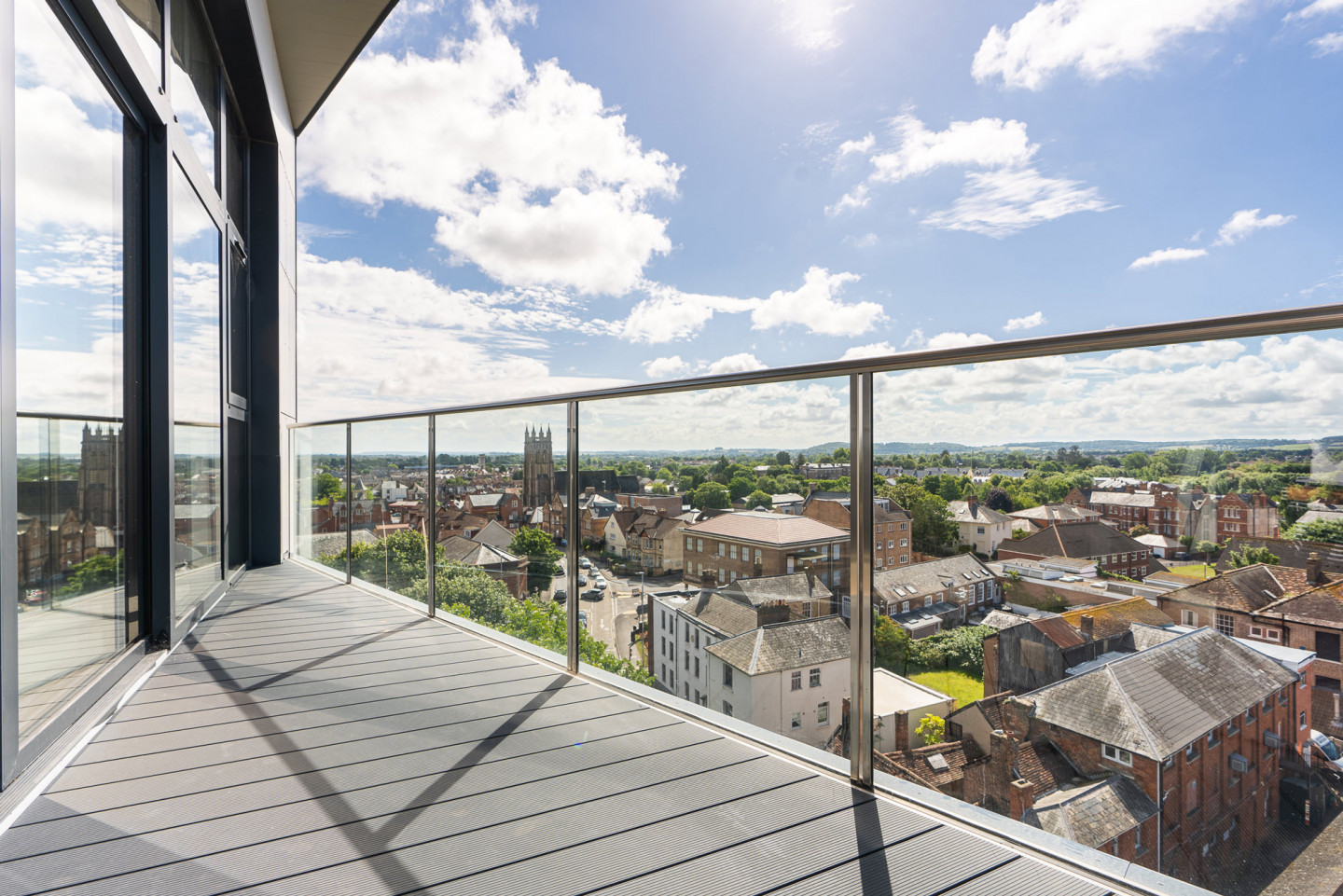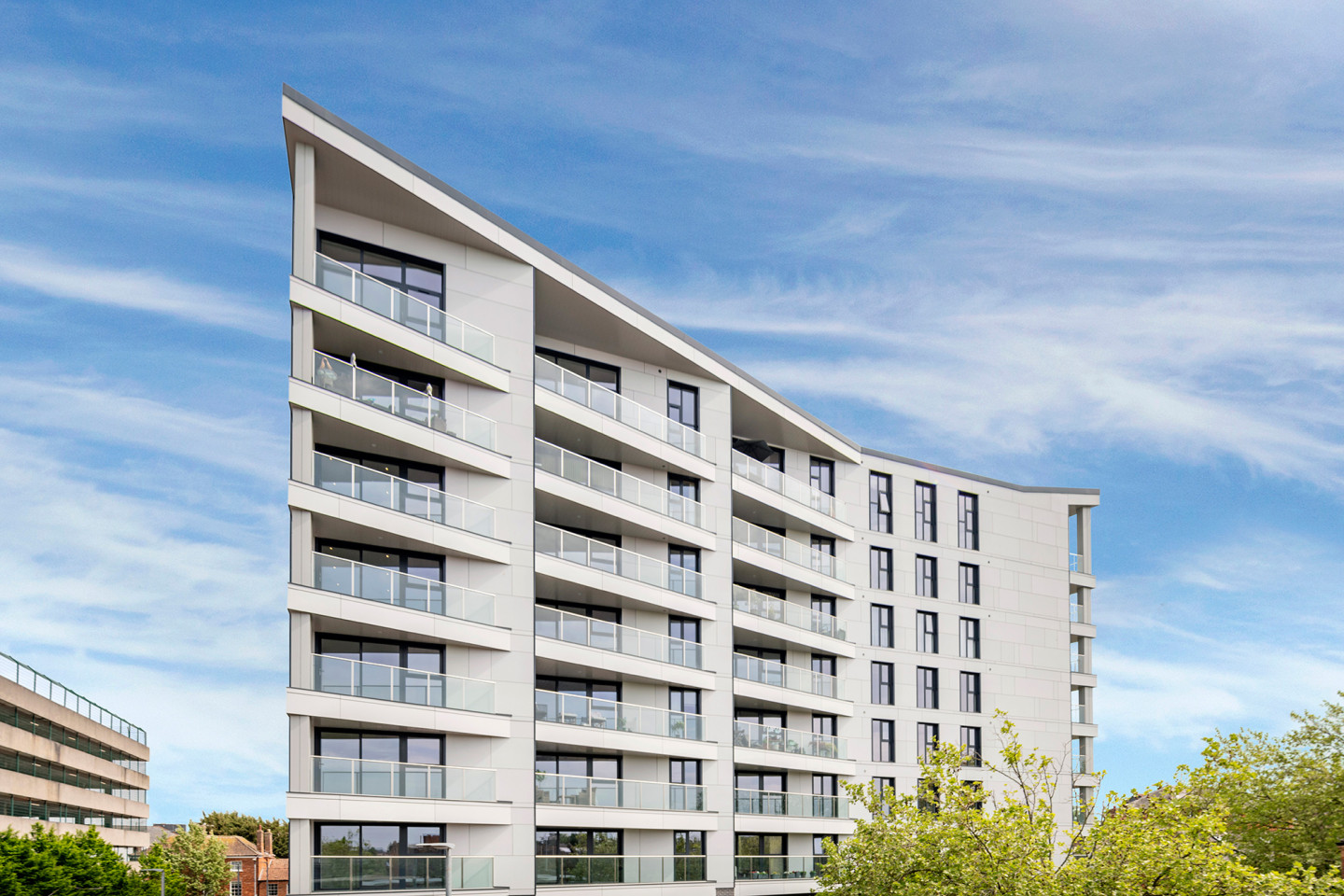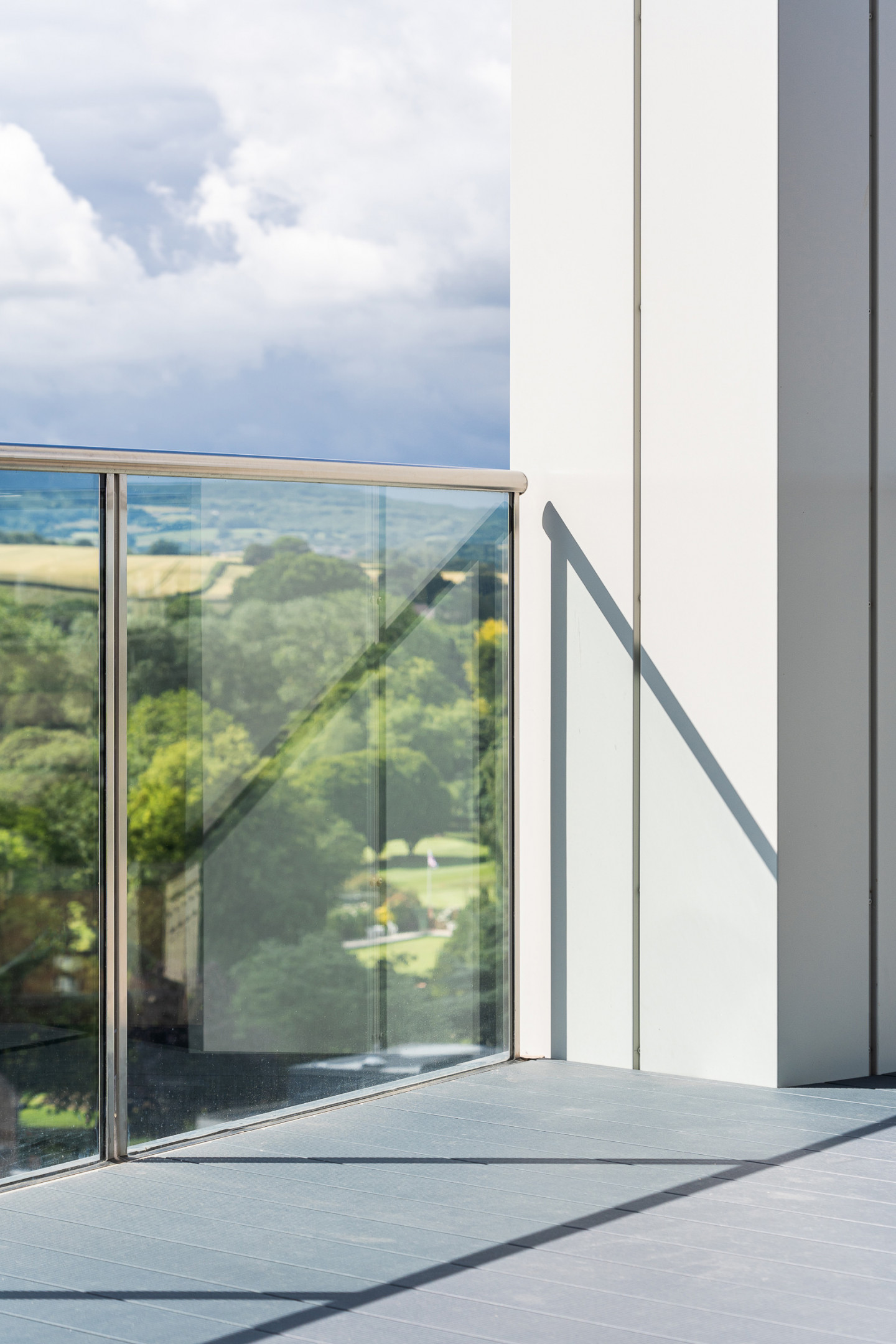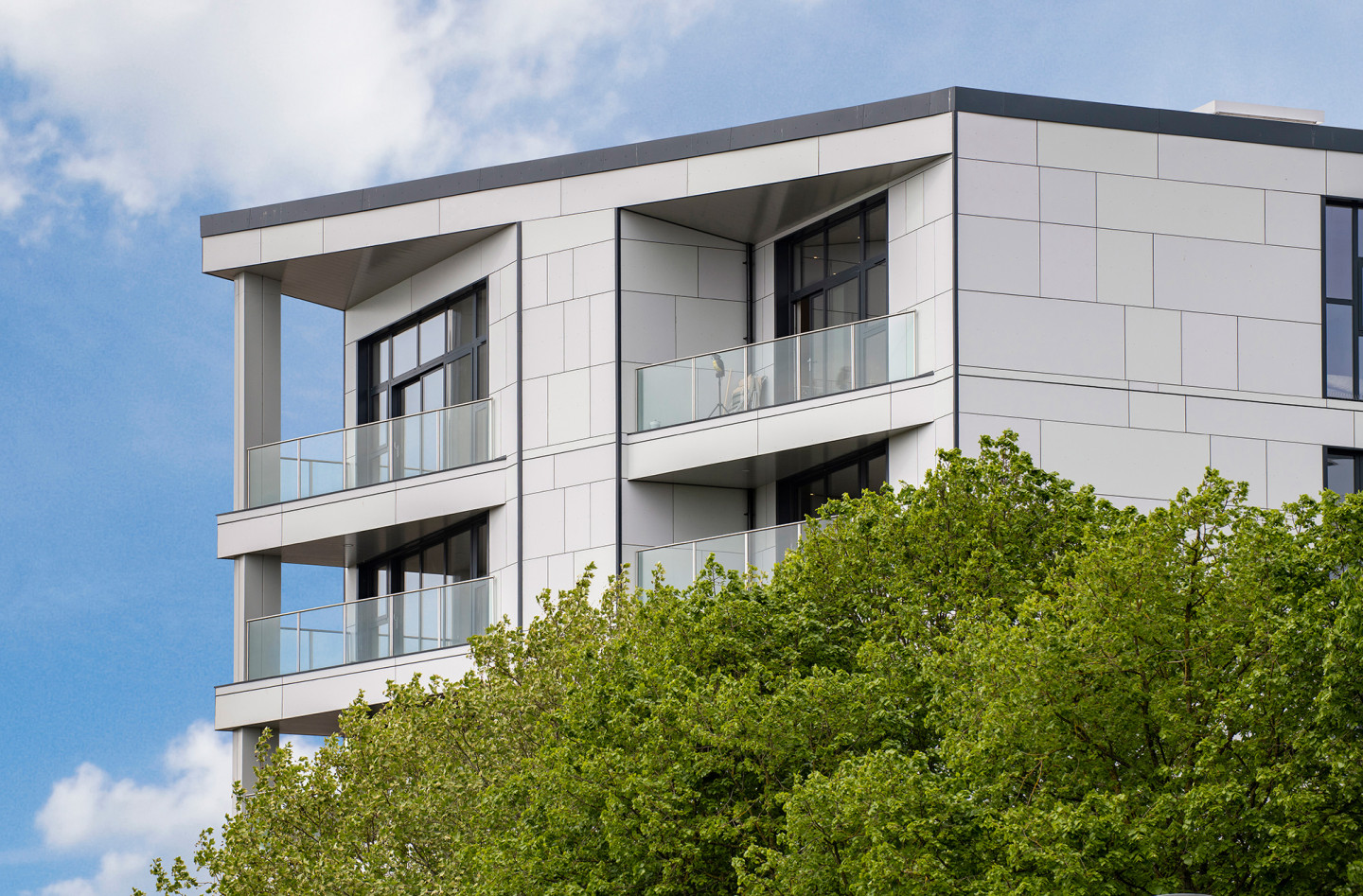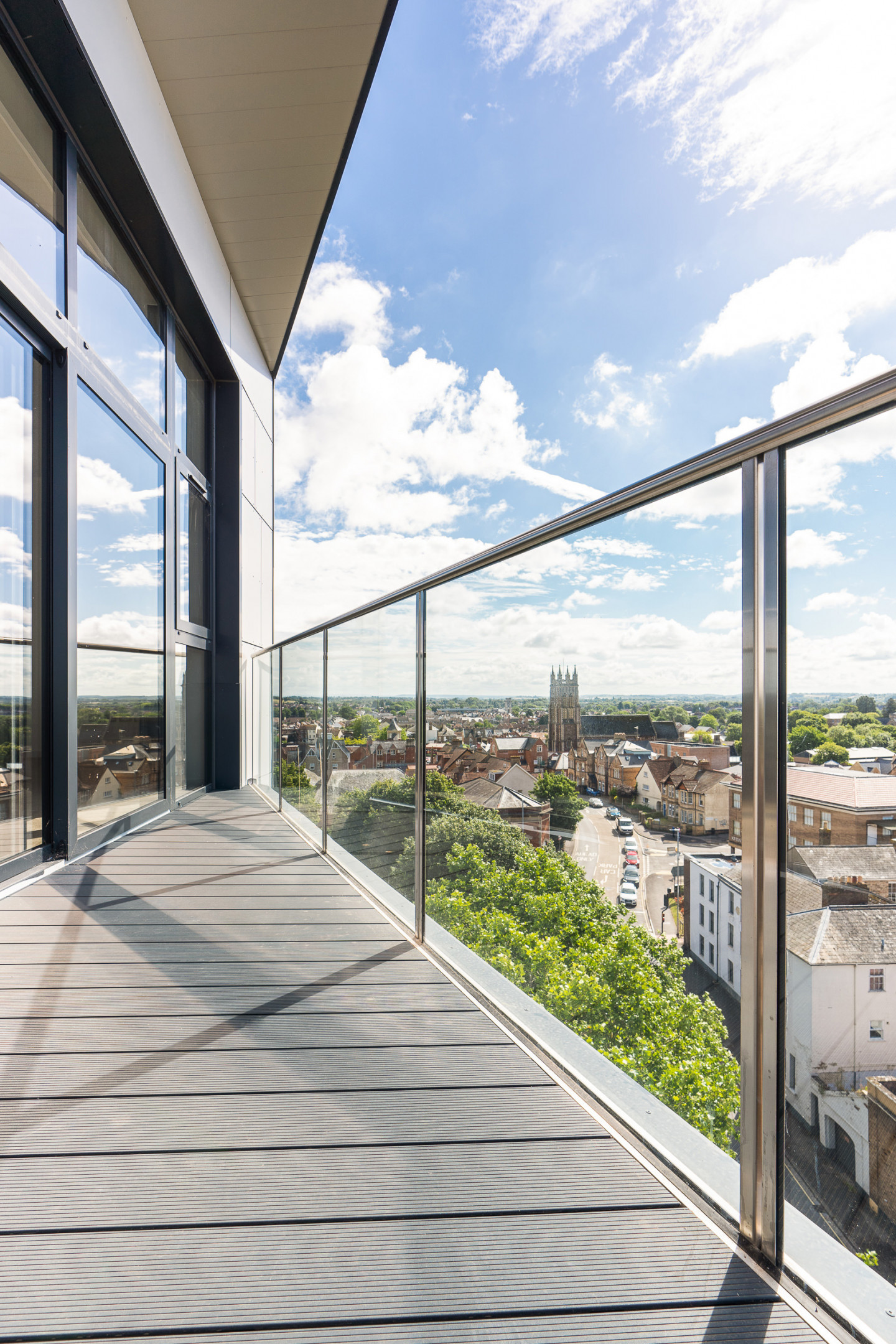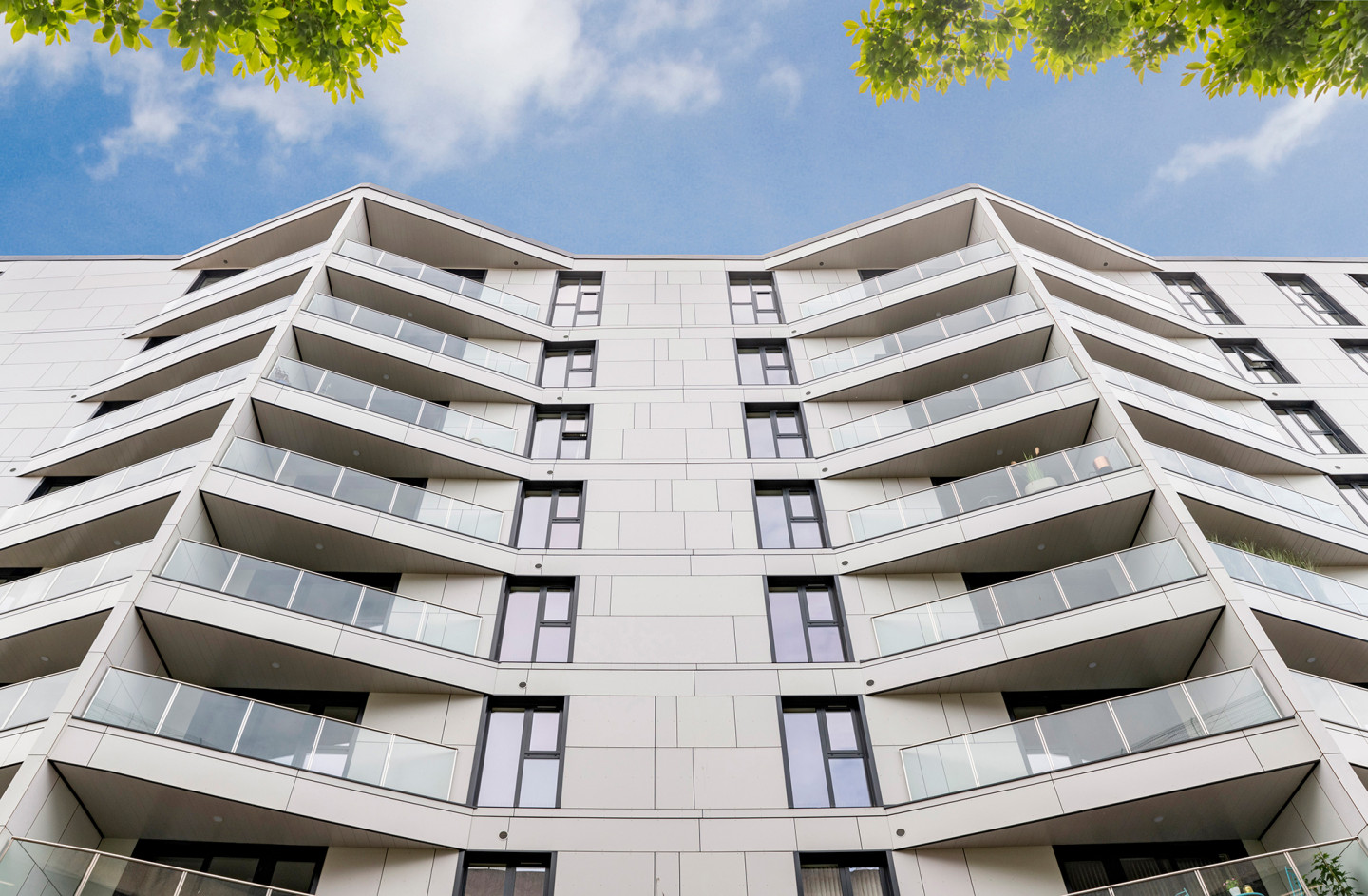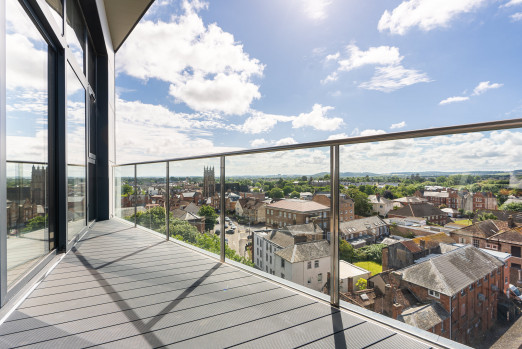Following the Grenfell Tower disaster of 2017, a ban was placed on the use of laminated glass on high-rise residential balconies, due to the interlayer. With balconies an attractive design feature, providing private, outdoor spaces to high-rise living, fire safety glass manufacturers have had to push the boundaries to re-establish glass as a design solution in these applications. Andy Lake, Sales Director UK & IRE at Pyroguard explains more.
Developers are facing an increasingly competitive market when it comes to housing, with homebuyers wanting more for their money. Not only this, many cities are becoming student hubs, or tourist destinations, meaning towns and cities have become more heavily populated. As a result, high-rise buildings and accommodations are becoming an increasingly common sight, stimulating developers to build upwards rather than outwards, to help accommodate the increasing number of people looking for a place to live.
One of the main external aspects of these high-rise apartments tends to be a balcony, with glass an ideal building material for their construction. Offering a striking exterior feature, they provide a resident with something a little more premium. However, following on from changes to Part B of the Building Regulations, a ban was placed on the use of laminated glass on high-rise building balconies, due to the interlayer potentially being combustible. Now, with the latest market developments, glass is making its way back into these applications.
One of the first UK projects to benefit from these material innovations is Quantock House in Taunton, Somerset, with an NHBC accepted A2-s1 glass balustrade system installed on its balconies.
A residential development exclusively for the over 55’s, Quantock House is an eight-storey building with a series of one and two-bedroom apartments. The latest development from Platinum Skies, part of the Affordable Housing and Healthcare Group (AHH), Quantock House features a bar, bistro, activity room and private, landscaped gardens. Designed for luxury and comfort, each apartment features a modern glass balcony overlooking the surrounding hills. Adding a balcony to this type of building gives residents an extra space to relax outside, without the need to leave their apartment.
Appointed by AHH, Architectural Metalwork Installations Limited (AMI), the architectural metalwork specialist, was tasked with developing a fire-rated glass balustrade solution. Working closely with Pyroguard, this collaboration resulted in the development of AMI’s Fire-Tek Balustrade system, which featured Pyroguard Balustrade fire safety glass. The system, fully backed by site specific structural calculations, is compliant with all the latest building regulation requirements for residential buildings over 18 metres tall (11 metres in Scotland).
Designed specifically for balcony and balustrade applications and suitable for use in buildings over 18-metres high, Pyroguard Balustrade is the first of its kind (patent pending). A toughened fire safety glass, manufactured to ‘Reaction to Fire’ classification A2-s1, Pyroguard Balustrade can also offer excellent light transmission and is certified to the 1B1 impact resistance rating (according to EN12600) – both key factors for the application.
While ensuring the safety capabilities of the glass is imperative, it is also important that the glass used will not have any adverse reactions to extreme weather like heat, rain or wind – especially given its prominent position on the building’s exterior. According to regulations, safety glass products must be tested to the industry standard for weathering: ISO 12543-4:2011. Whilst there are laboratory tests for this, Pyroguard additionally conduct their own weathering tests in the Arizonian desert, further testing the glasses reaction to intense UV radiation and air temperatures over long periods of time.
Working with like-minded professionals, Pyroguard’s Balustrade fire safety glass has given developers the option to incorporate glass back into high-rise balconies. With Quantock House having welcomed its first residents earlier this year, Pyroguard Balustrade has become the latest innovation in fire safety glass.
Speaking about the Quantock House project, Steve Furniss, Director at AMI said: “We were first introduced to Pyroguard by our client, AHH, who had tasked us with creating a fire-rated glass balustrade system, after initially struggling to find a solution suitable for buildings over the 18-metre threshold on the open market. Collaborating with Pyroguard, our design team was able to develop the AMI Fire-Tek Balustrade system.
“As well as delivering effective fire protection, it was important that the glass used within our system adhered to the line load requirements associated with these types of high-rise buildings – Pyroguard Balustrade ticks all of the boxes. Our client was delighted with the end-result, with our system design and the Pyroguard glass accepted by the NHBC for use on this development.”
Andy Lake, Sales Director UK & IRE at Pyroguard, added: “It’s been great to work with AMI on the development of this balustrade system and we’re exceptionally proud to be the only glass manufacturer in the UK currently offering such a product. Following the Building Regulations’ ban on the use of laminated glass on high-rise residential balconies and terraces back in December 2018, it’s wonderful to now be able to re-establish glass as a design solution for such applications.”
For more information about Pyroguard Balustrade, see here: www.pyroguard.eu.
